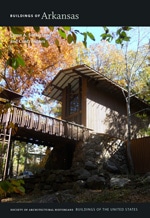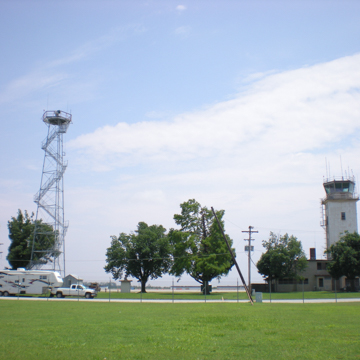In 1942, land between Blytheville and the community of Gosnell to the northwest was chosen for the site of a U.S. Army airfield for pilot training. The base was deactivated in 1945 at the end of World War II. In the early 1950s, the Strategic Air Command (SAC) approved a plan to convert the former airfield into an airbase, which officially opened in 1955 as Blytheville Air Force Base. Housing for members of the military and their families was developed between 1957 and 1962 north and south of Memorial Drive, with single-family and duplex ranch-style houses designed by Swaim and Allen and set in a curvilinear street pattern. As the home of the Ninety-Seventh Bombardment Wing, the base was active from the Cold War to Operation Desert Storm in the Middle East in 1990. The base’s name was changed in 1988 to honor air pioneer Lieutenant General Ira C. Eaker. In 1992 the SAC closed the base, primarily because the military was retiring the large B-52G aircraft, the housing and launching of which was the single mission of the base. Eighty acres were declared a National Historic Landmark for the Arkansas Archeological Survey to create a facility on the south side of the base to research Native American sites of the Mississippian period. Approximately one-third of the land was turned over to state and local authorities. Since that time, various adaptive reuse projects for the air base buildings have been explored. Currently the site has a mix of uses, among which are a multi-modal transportation facility for the Arkansas International Airport (the site has the longest runway in the state available for public use), a retirement community known as Westminster Village of the Mid-South, a sports complex, and a golf course. These new uses have helped regain some of the losses in civilian jobs precipitated by the closing of the airbase.
You are here
Arkansas Aeroplex (Eaker Air Force Base, Blytheville Air Force Base)
If SAH Archipedia has been useful to you, please consider supporting it.
SAH Archipedia tells the story of the United States through its buildings, landscapes, and cities. This freely available resource empowers the public with authoritative knowledge that deepens their understanding and appreciation of the built environment. But the Society of Architectural Historians, which created SAH Archipedia with University of Virginia Press, needs your support to maintain the high-caliber research, writing, photography, cartography, editing, design, and programming that make SAH Archipedia a trusted online resource available to all who value the history of place, heritage tourism, and learning.









